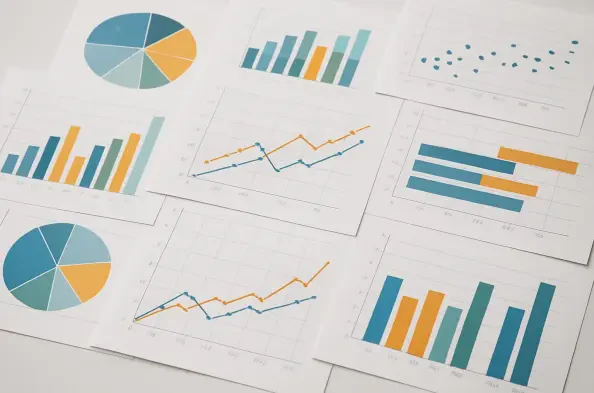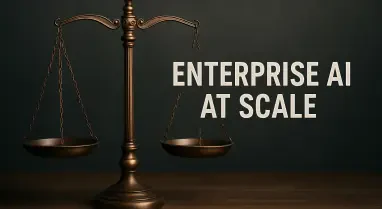Imagine a world where businesses can pivot their strategies in real-time, reacting to sudden supply chain disruptions or regulatory changes before they derail operations. This is not a distant dream but a reality enabled by continuous foresight technology, a transformative approach to strategic planning that thrives in today’s volatile, uncertain, complex, and ambiguous (VUCA) environment. As global markets face weekly shocks, from tariff shifts to technological breakthroughs, the ability to anticipate and adapt has become a critical competitive edge. This review explores how continuous foresight technology reshapes decision-making, delving into its core features, real-world impact, and potential to redefine resilience across industries.
Understanding the Shift to Continuous Foresight
Continuous foresight technology marks a departure from traditional planning methods by embracing a dynamic, data-driven framework. Unlike static scenario planning, which often relies on fixed snapshots of possible futures, this approach integrates live data to provide ongoing insights. It enables organizations to monitor changes as they unfold, ensuring that strategies remain aligned with current realities in a fast-paced world.
The relevance of this technology is amplified in a VUCA landscape where volatility can upend plans overnight. Businesses no longer have the luxury of waiting for annual reviews to adjust their course. Continuous foresight offers a proactive mechanism to navigate uncertainty, complexity, and ambiguity, positioning companies to act decisively even when information is incomplete.
This shift represents a fundamental change in how strategic planning is approached. By focusing on adaptability, continuous foresight empowers leaders to move beyond reactive measures, fostering a mindset of preparedness that is essential for sustained success in turbulent times.
Core Features Driving the Technology
Real-Time Data Integration
A cornerstone of continuous foresight systems is their ability to pull in real-time data from diverse sources such as enterprise resource planning (ERP), project portfolio management (PPM), and Agile tools. This capability ensures that strategic plans are grounded in the latest information, reflecting market shifts or operational challenges as they happen. The immediacy of this data flow is vital for maintaining relevance in environments where delays can lead to costly missteps.
Beyond just gathering data, these systems process and contextualize it to inform decision-making. For instance, a sudden spike in shipping costs can trigger immediate adjustments to inventory plans, preventing overstock or shortages. This level of responsiveness sets continuous foresight apart from older methods that often lag behind real-time developments.
The significance of real-time integration cannot be overstated. It transforms planning from a periodic exercise into a living process, enabling organizations to stay ahead of disruptions and capitalize on emerging opportunities with precision.
Driver-Based Modeling and AI Analytics
Another critical component is the use of driver-based modeling paired with AI-enabled analytics. These tools link macroeconomic trends, such as interest rate changes or energy price fluctuations, to specific operational metrics like production costs or sales forecasts. By mapping these relationships, businesses can simulate various scenarios with remarkable accuracy.
AI plays a pivotal role in accelerating this process, reducing the time needed to build and refine models from weeks to mere hours. This speed enhances decision-making precision, allowing leaders to test multiple “what-if” scenarios without being bogged down by manual calculations. The result is a clearer understanding of potential outcomes under different conditions.
Moreover, these technologies enable organizations to anticipate ripple effects across interconnected systems. A change in one variable, such as a supply chain delay, can be analyzed for its impact on budgets, timelines, and resources, ensuring that decisions are both informed and holistic.
Evolution from Static to Dynamic Planning
Scenario planning has a storied history, originating during the Cold War as a tool for defense strategists to imagine unlikely but impactful futures. By the 1970s, corporations like Royal Dutch Shell adopted it to navigate crises such as oil shocks, proving its value in stretching conventional thinking. However, as the pace of change accelerated, static scenarios—often crafted annually—began to show their limitations.
In today’s environment, where disruptions occur weekly, static methods fall short. Plans become outdated almost as soon as they are finalized, leaving organizations vulnerable to unforeseen challenges. The disconnect between long-term visions and short-term execution further compounds the issue, as strategies often remain theoretical rather than actionable.
Continuous foresight emerged as a necessary evolution to address these gaps. By integrating live data and rolling forecasts, it bridges the divide between strategy and execution, ensuring that planning remains agile and relevant. This transition reflects a broader recognition that adaptability, not prediction, is the key to thriving amid constant change.
Industry Applications and Tangible Impact
Across various sectors, continuous foresight technology has demonstrated its ability to tackle complex challenges. In retail, for example, companies have used real-time adaptability to manage inventory when container costs spiked unexpectedly, avoiding the pitfalls of overstocking. This responsiveness has proven critical in maintaining operational efficiency under pressure.
In the automotive industry, manufacturers grappling with chip shortages have leveraged continuous foresight to recalibrate electric vehicle roadmaps swiftly. Similarly, financial institutions have adjusted to rapid interest rate hikes by updating stress tests dynamically, while pharmaceutical firms accelerated development timelines during global health crises. In energy, utilities have recalibrated demand forecasts as renewable costs dropped faster than anticipated, showcasing the technology’s versatility.
These examples underscore a broader trend: industries that adopt continuous foresight gain a significant edge in navigating uncertainty. By linking strategic insights to tactical moves, the technology addresses specific pain points like supply chain disruptions or regulatory shifts, driving measurable improvements in resilience and performance.
Challenges Hindering Wider Adoption
Despite its promise, continuous foresight technology faces several hurdles. Technical challenges in integrating disparate data sources remain a significant barrier, as inconsistencies or delays can undermine the system’s effectiveness. Ensuring seamless connectivity across finance, supply chain, and HR tools requires robust infrastructure, which many organizations lack.
Additionally, the complexity of dependency modeling poses a challenge. Mapping the intricate relationships between variables—such as resources, budgets, and timelines—demands sophisticated tools and expertise. Without accurate models, the insights generated may be incomplete or misleading, limiting the technology’s value.
Organizational resistance to change further complicates adoption. Shifting from familiar static methods to a continuous approach often meets skepticism, as it requires cultural and procedural adjustments. Efforts to address these barriers are underway, with vendors and consultants focusing on user-friendly interfaces and training programs to ease the transition.
Future Trajectory and Potential
Looking ahead, continuous foresight technology is poised for significant advancements. Innovations in AI and data analytics are expected to further enhance modeling capabilities, enabling even faster and more accurate simulations. As these tools become more accessible, smaller organizations may also adopt them, broadening the technology’s reach.
Industry adoption is likely to expand over the next few years, particularly in sectors facing high volatility. As more companies witness the benefits of real-time adaptability, continuous foresight could become a standard component of strategic planning, fundamentally altering how businesses prepare for uncertainty.
The long-term impact on organizational resilience and agility cannot be ignored. In an increasingly unpredictable world, the ability to sense, analyze, and act on emerging trends will distinguish leaders from laggards. Continuous foresight stands as a critical enabler of this transformation, promising to redefine strategic decision-making for the better.
Final Reflections and Path Forward
Looking back, the exploration of continuous foresight technology revealed its profound capacity to transform strategic planning across diverse industries. Its ability to integrate real-time data and simulate complex scenarios proved instrumental in addressing modern challenges that static methods could not handle. The review highlighted tangible benefits in sectors ranging from retail to energy, where adaptability translated into competitive advantage.
As a next step, organizations should prioritize building the infrastructure needed to support continuous foresight systems, focusing on seamless data integration and user training. Technology leaders are encouraged to champion pilot programs that demonstrate value, paving the way for broader adoption. Collaborating with vendors to tailor solutions to specific industry needs will also be crucial.
Ultimately, the journey toward resilience requires a commitment to evolving beyond outdated practices. By investing in continuous foresight, businesses can cultivate a proactive mindset, ensuring they are not just reacting to change but shaping it. The opportunity to build this capability now sets the stage for enduring success in an ever-shifting landscape.






